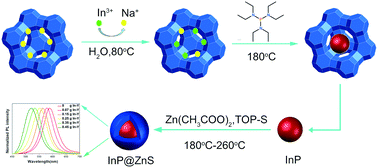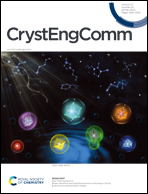Controlling the nucleation process of InP/ZnS quantum dots using zeolite as a nucleation site†
Abstract
As a representative of III–V semiconductor materials, InP/ZnS quantum dots are regarded as the star material in the field of light-emitting devices due to their low toxicity and suitable luminescence range. However, there are still some major problems in the preparation process of InP/ZnS QDs, such as phosphine precursors are expensive and difficult to preserve, the nucleation time of short wavelength InP/ZnS QDs is too short and the size distribution is too large. In this paper, we'll replace the traditional tris(trimethylsilyl)phosphine with tris(diethylamino)phosphine as a cheaper phosphine precursor and propose a novel and convenient method for adjusting the luminescence wavelength of InP/ZnS QDs. Different from the traditional method to adjust the emission wavelength by changing the nucleation time, the emission wavelength of InP/ZnS QDs was regulated by changing the number of initially formed cores. Zeolites provide a nucleation site for the InP cores. InP/ZnS QDs that emit between 522 nm and 589 nm were obtained. Moreover, the obtained InP/ZnS QDs have good monochromaticity, and the minimum half-width (half-full width) is up to 48 nm. This method provides a new way to adjust the size of quantum dots with good performance.



 Please wait while we load your content...
Please wait while we load your content...